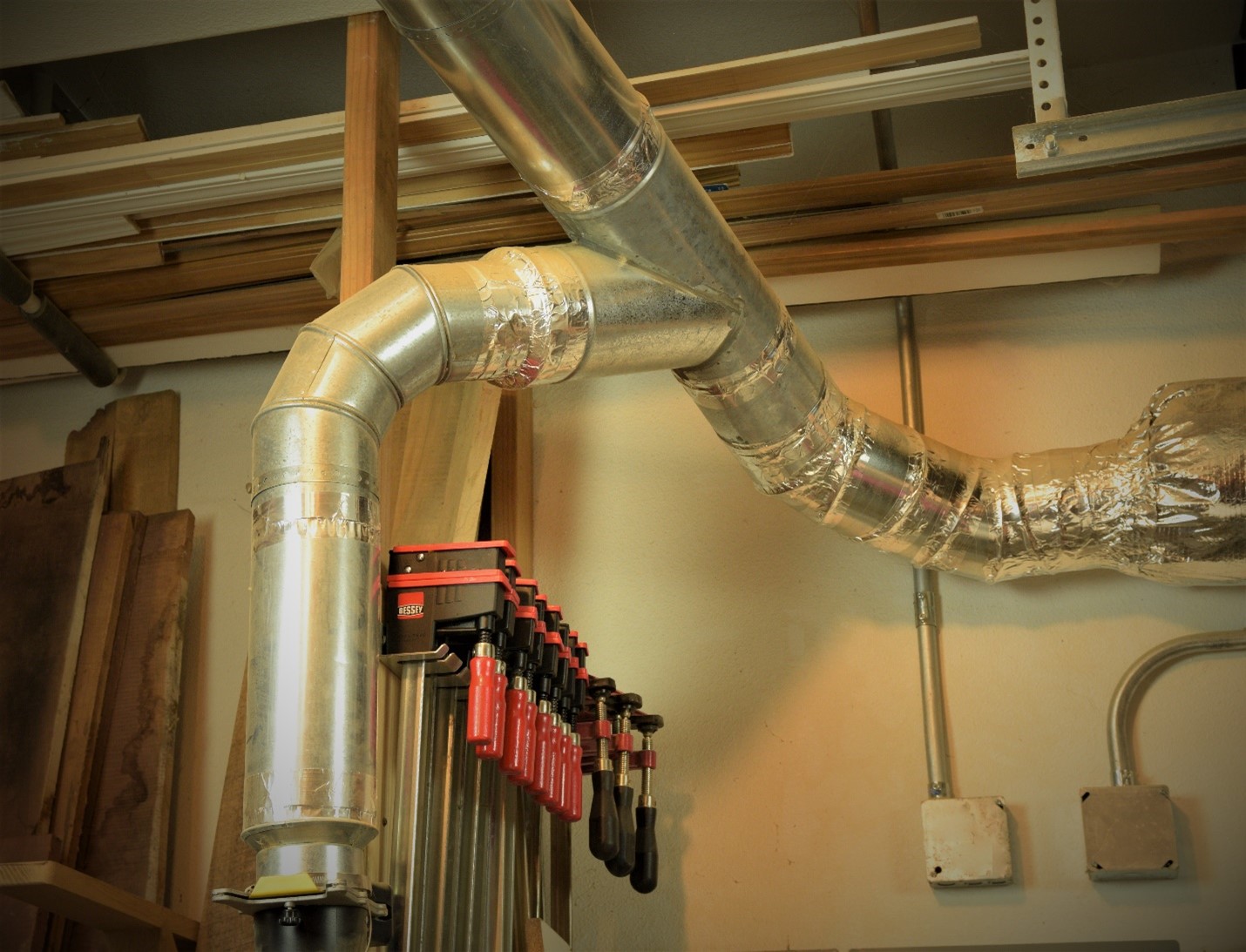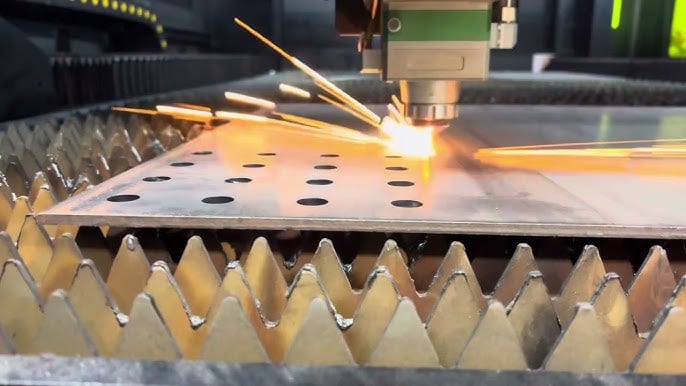In a busy woodshop, you’re likely to find a central dust collector with long lengths of piping connecting to various tools. When the ductwork is clear and the filter is clean, a dust collector works with optimal efficiency to keep both your shop floor and air clean. But how do we know if the ducting is clear of obstructions? When is the last time you looked inside? If you’re like many woodworkers in small shops, the answer is never. Afterall, it would be quite a hassle to drill out the rivets, cut foil tape and separate enough pipe to inspect the ductwork. PVC pipe may be a little easier in that regard if it’s loosely assembled. However, PVC pipe is nearly impossible to separate at the joints when it’s been glued together.

Luckily, I’ve noticed borescopes are more common on the market, and the prices are coming down. I’ve never heard of anyone using a borescope to inspect a dust collection system, but it seemed like the perfect tool for the job. They are available in two basic types: a camera module that works in conjunction with your cell phone, or a stand-alone unit. The stand-alone unit includes a viewing screen, and typically offers additional features such as the ability to take still pictures, videos, or change camera angles. I happened to purchase a stand-alone borescope, but for these purposes any basic unit will work fine. Just select a unit with a semi-rigid camera probe, and at least 15 feet of reach.

Where are clogs likely to occur? The most common locations for dust collection blockage to occur are very near the source of the dust. Typically the spot where the dust exits the tool, or the first or second bend in the pipe. The old prospectors song North to Alaska, where Johnny Horton proclaims “Where the river is winding, big nuggets they’re finding” said it best. Just like gold nuggets dropping out of the river current at a bend in the stream, dust collection pipes get clogged at the bends. If a planer or jointer clogs up, you’re likely to know about it. Since these tools produce such a large volume of chips, a problem with airflow can quickly clog the pipe.

The trickier problems to diagnose are partial obstructions. These occur at tools that produce long slivers of wood, like the tablesaw. Occasionally, one of these strips will get sucked past the throat plate and lodge at the first bend in the pipe.

This is especially true if you don’t use a zero clearance insert on your tablesaw. Then it becomes a ‘log jam’ effect, where a small piece of wood that could normally pass through the system gets caught on the sliver of wood. This cycle repeats itself until you notice a drop in dust collection efficiency at the tool.

Even the bandsaw can slurp up a sliver of wood and clog, if neglected long enough. I look for easy entry points into the system, like this extra blast gate that allows me to inspect the ducting both upstream and downstream.

If you do discover strips of wood or a “log jam” as I like to call them, mark how deep the scope is inserted into the pipe with your hand. This will give you an idea of which pipe to separate to clear the clog. Since all of my ductwork is assembled with pop rivets and foil tape, they’re pretty easy to separate and re-assemble if needed. That’s exactly why I avoid duct mastic or silicone when installing dust collection pipes. If you’re installing a PVC system, use foil tape instead of plastic cement for the same reason.

Wood species and cutterhead type both play a role in the likelihood of a clog. Maple, I have noticed, produces larger shavings that are more likely to create problems compared to other hardwoods. Likewise, straight knives tend to produce bigger chips, especially if you’re milling wide boards. Think about the large scooping motion of straight knives on a planer. The type of chip ejected from straight knives is much more likely to clog a dust collector, compared to a segmented cutterhead. The shearing action of the Laguna Shear-Tec II is the best solution overall. Not only does it eliminate tearout, the head is actually designed to maximize dust collection. The chips created by the bite-sized carbide cutters are smaller, and easily whisked away by the dust collector. Deep gullets in the cutterhead also facilitate efficient dust collection.


Of course, the powerplant you’re using and its overall design play a large role in dust collection efficiency as well. Consider upgrading to a PFlux cyclone dust collector, to separate out large chips before they ever reach the pleated filter. Plus, the HEPA filter sensor and drum-full sensor help you avoid problems before they start.

D.C. Tip for the Wise: Whenever possible, start with a straight run of duct, at least 5’ long to minimize turbulence as air enters the cyclone. This will greatly improve separation of the system, and lead to fewer overflow bin cleanouts, and longer filter life.
Try a borescope to give your dust collection pipes a checkup. If major surgery to the system is required, check out all the great cyclones at LagunaTools.com
Willie Sandry is a frequent magazine contributing author, blogger and YouTuber.
Check out his channel ‘the Thoughtful Woodworker’ for more dust collection solutions!
View Willie's How-To video! Borescope to Inspect Dust Collection System in Woodworking Shop




